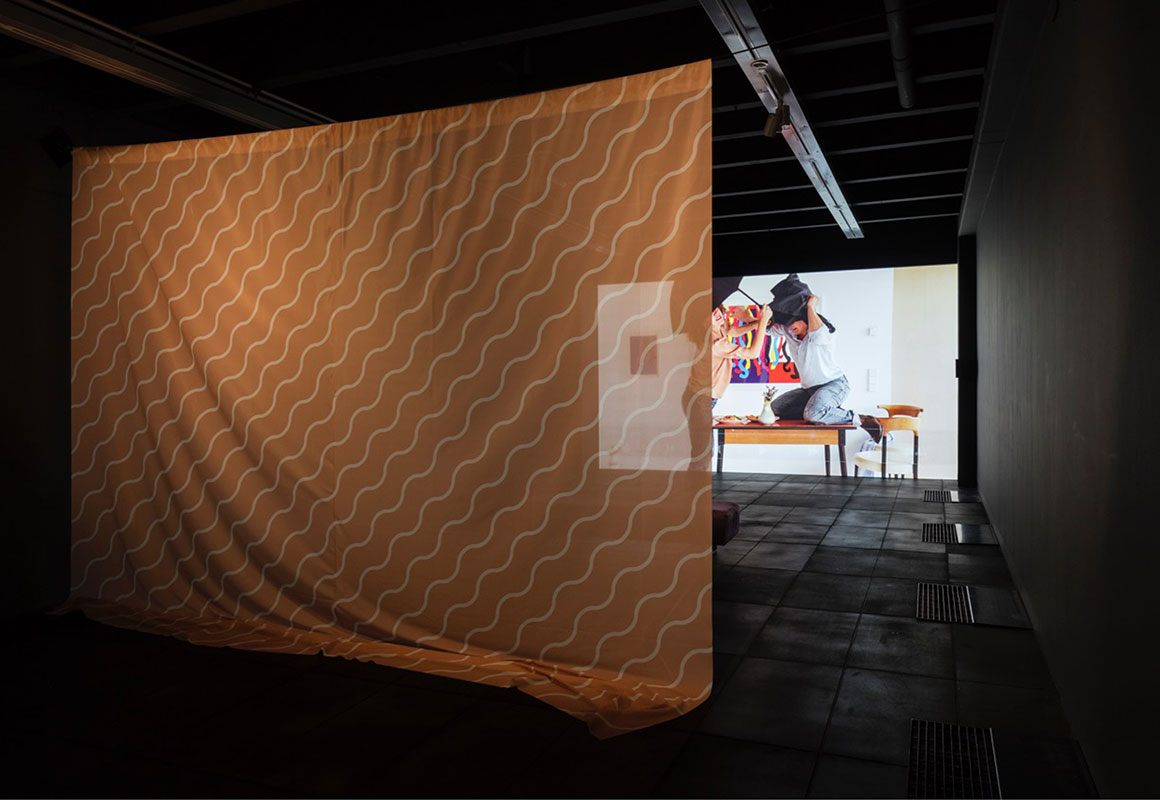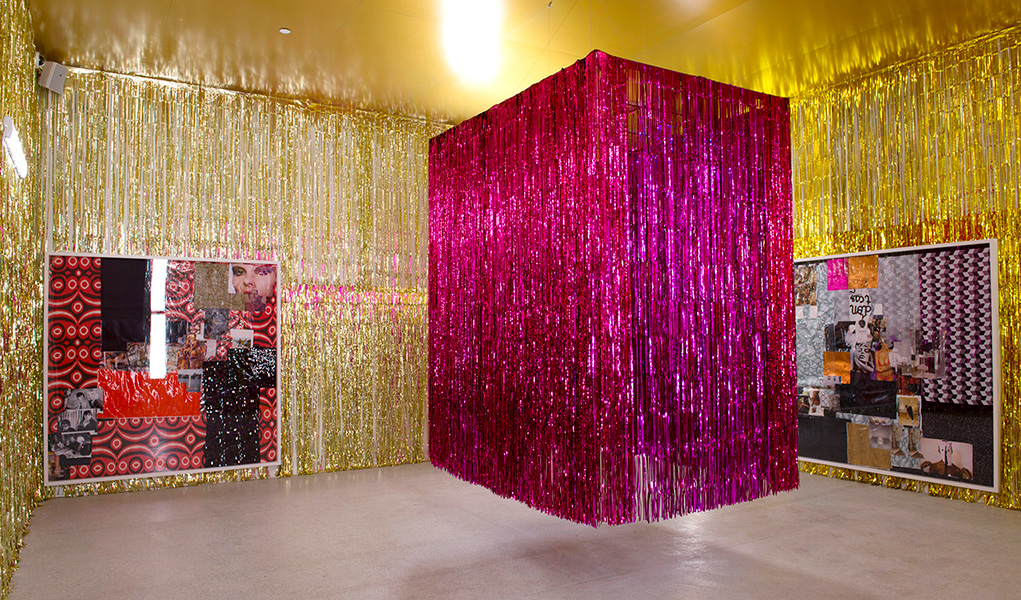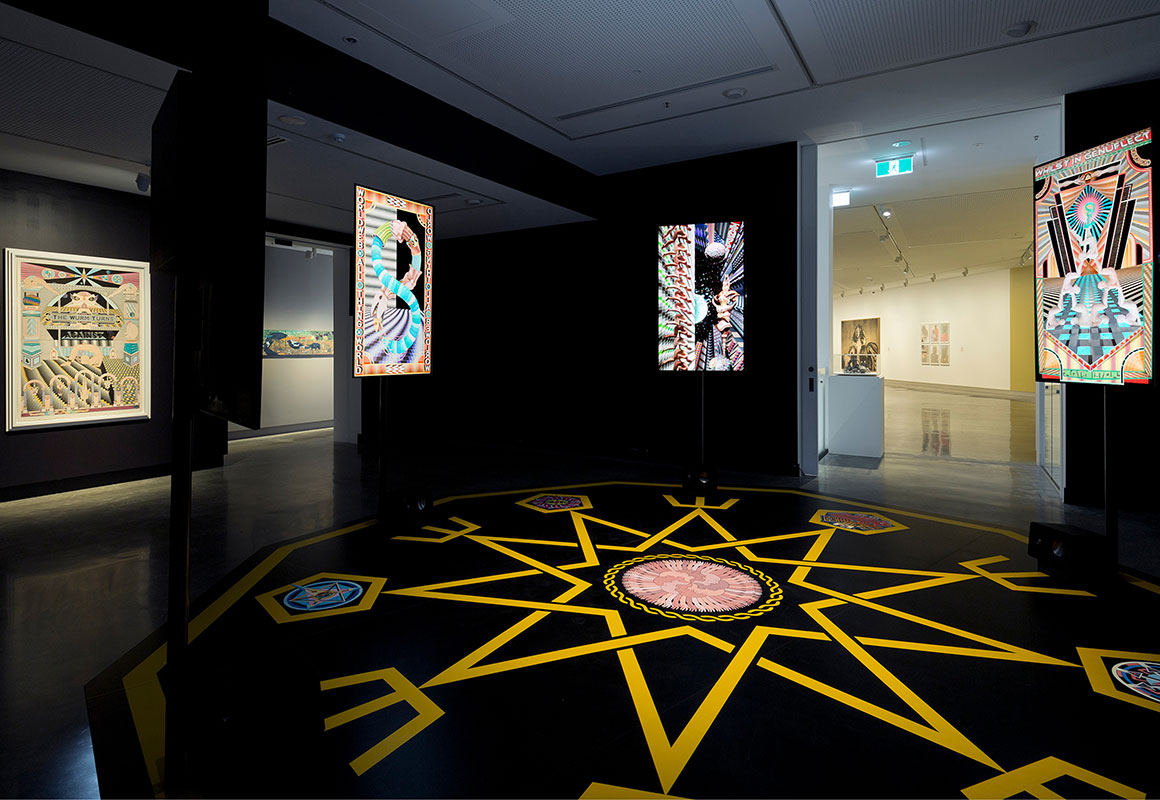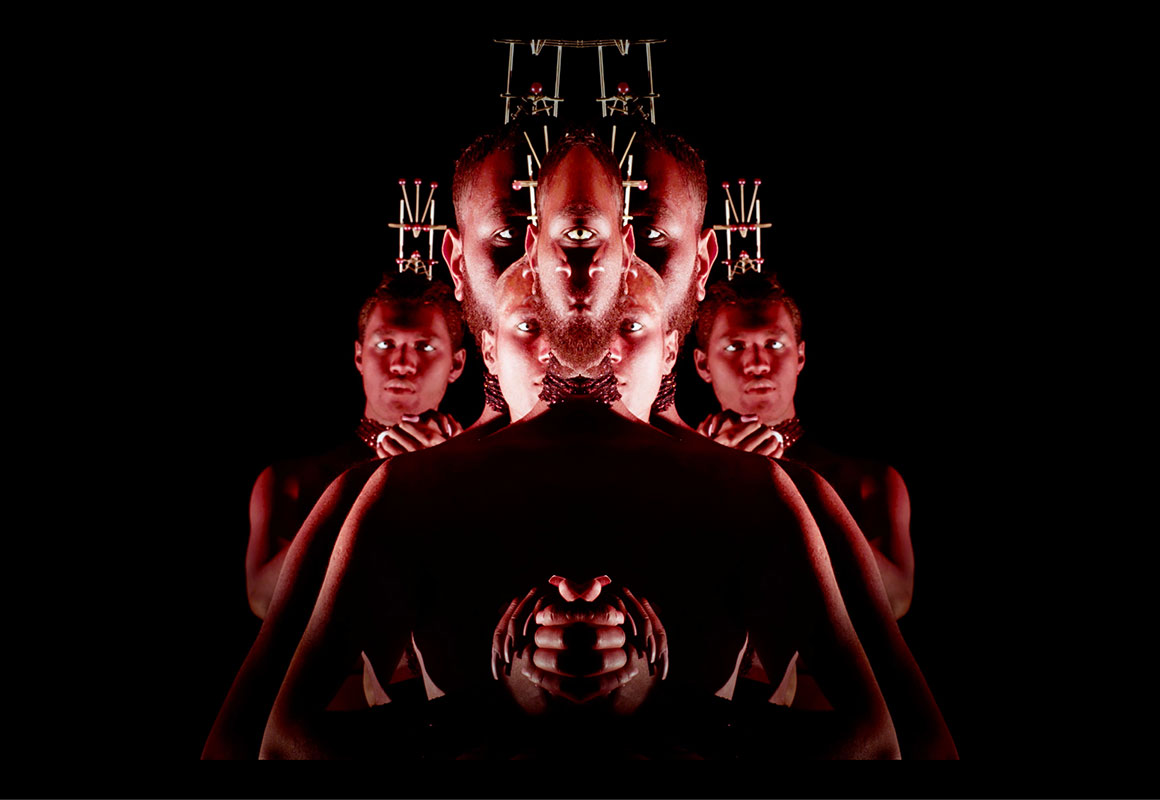The Walters Prize 2018 Jury Statement
‘In selecting this years’ nominees, we tabled over 30 projects by New Zealand practitioners, realised both within New Zealand and offshore. The selection represents our genuine attempt to work across multiple fronts within a continually shifting contemporary art scene – by consolidating and considering practitioners who have, within their distinctive artistic practices, made outstanding contributions to the contemporary art field.’
‘Our selection includes work that expands ideas of sex, gender and ritual; installations exploring the legacies of feminism; and an immersive work that embraces and pushes technologies of moving image and animation.’
Ruth Buchanan (Te Ātiawa/Taranaki)
Born New Plymouth, 1980
Lives and works in Berlin
Bachelor of Fine Arts, Elam School of Fine Art, University of Auckland, Auckland
Masters of Arts (Fine Art), Piet Zwart Institute, Willem de Kooning Academie, Rotterdam
Nominated for: BAD VISUAL SYSTEMS, solo exhibition that included work by Judith Hopf and Marianne Wex upon invitation of the artist, Adam Art Gallery Te Pātaka Toi, Victoria University of Wellington, 2 October–22 December 2016
Jury statement:
In the exhibition BAD VISUAL SYSTEMS, Ruth Buchanan provocatively blurred the roles of artist, designer and curator. Her complex installation incorporated text, video, sound and a variety of large-scale sculptural features in order to fundamentally alter the way the site was navigated and how artworks were encountered. A series of motion-activated speakers served as audio-guides for the exhibition coming to life as audience members moved towards them, videos were experienced alongside gallery hosts, and room dividers rearranged familiar spaces, disrupting existing way-finding and skewing the perception of historical features of the building. Buchanan strategically included key artworks by fellow artists Marianne Wex and Judith Hopf, weaving these into the fabric of the exhibition through her unconventional display systems. Their presence in the show further positioned her thinking within a lineage of feminist discourse that values collegiality over the individualist aspirations of a solo exhibition. The exhibition represented an extraordinary achievement in Buchanan’s constantly expanding practice.
Jacqueline Fraser
Born Dunedin, 1956
Lives and works between Auckland and New York
Bachelor of Fine Arts, Elam School of Fine Arts, University of Auckland
Nominated for: The Making of Mississippi Grind 2017, 2017, mixed-media installation, Auckland Art Gallery Toi o Tāmaki, 20 May – 15 October 2017
Jury statement:
The Making of Mississippi Grind 2017 operates as a sponge for an array of popular cultural references, casting a seductive gaze towards celebrity, rap culture and high-fashion. The installation exemplifies Jacqueline Fraser’s ability to create viscerally charged domains at an architectural scale; complete with a gold ceiling reflecting pink and gold tinsel from the walls and chandelier, and pumping sound tracks including Rhianna and Migos. The light from the film ‘Mississippi Grind’ was projected across the space, its soundtrack muffled every five minutes by one of the 19 rap songs.
As well as large-scale, site-specific installations, Fraser’s THE MAKING OF series includes thousands of individual collages, three significant examples of which featured in the exhibition. Each collage in the series references a film, from mainstream Hollywood movies to cult classics. But in titling her works as fictional ‘making of’ documentaries, Fraser’s intention is less to represent these films than to position her own collages and installations as short-form documentary mash-ups: instigating an irreverent procedure of exhibition making that uses the content from the films as a prompt to lay bare the production of image culture.
Jess Johnson (New Zealand)
Born 1979, Tauranga
Lives and works in New York
Bachelor of Fine Arts, School of Fine Arts, University of Canterbury
with Simon Ward (New Zealand)
Born 1977, Opunake
Lives and works in Wellington
Nominated for: Whol Why Wurld, 2017, mixed-media installation, raised decagon platform, floor painting, vinyl decals, 5 x looped videos, Carriageworks, Sydney, 30 March – 25 June 2017.
Jury statement:
Jess Johnson’s five-channel video installation Whol Why Wurld, made with Simon Ward, expands her drawing practice into digital and architectural space. Johnson’s distinctive drawings collect together rich tapestries of imagery drawn from a plethora of sources, including cosmic mythology, science fiction, early video games, RPG modules, architecture of the middle ages and traditional quilt-making. Optically complex and unsettling, Whol Why Wurld creates a collision between Johnson’s manually produced paintings and cutting-edge moving image technology.
Whol Why Wurld builds on an active collaboration, where over the past five years Johnson has worked with Wellington-based animator Simon Ward in order to digitise her drawings and create dynamic computer-generated worlds. Grounded in a shared interest in retro aesthetics, these complex HD video installations occur within a speculative space, complete with sound by Andrew Clarke and computer graphics by Luke Rowell.
Pati Solomona Tyrell (Samoa/New Zealand)
Born 1992, Hamilton
Lives and works in Auckland
Bachelor of Creative Arts, Manukau Institute of Technology
Nominated for: Fāgogo, 2016, single-channel HD video, ST PAUL Street Gallery, AUT, Auckland, 8 June – 21 July 2017
Jury statement:
'Fāgogo’ is a traditional practice that involves theatrical and performance-based forms of storytelling, which take place at night, before sleep. Pati Solomona Tyrell’s video work Fāgogo, likewise, explores this border between sleeping and waking. Individual figures merge into trios of fragmented bodies which continually mirror and fold into one another, conveying fluid gender and sexual identities. The powerful rhythmic texture of the video sustains this sense of bodies undergoing transformation in time, and in tune with a natural world which shuns the singular or, to quote, Tyrell: ‘I am not an individual’. Instead bodies are kaleidoscopic, iridescent and shape-shifting; figures move in liquid rhythms. At once intense and gently dreamlike, the work creates passages between the disparate notions of sea and land, ancient imagery and new media.
Alongside Fāgogo, the exhibition hosted performances, research and events associated with the collective FAFSWAG, of which Tyrell is a founding member and principal photographer.




